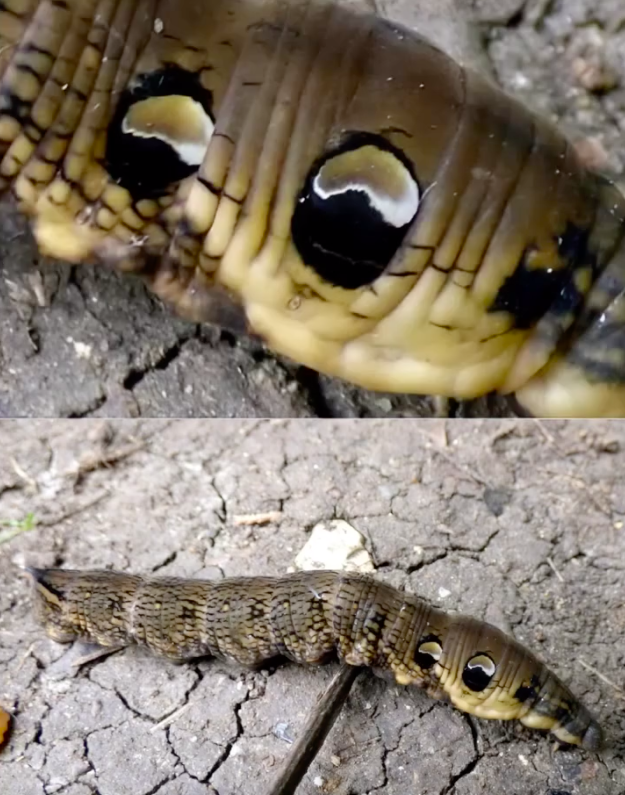In the tranquil town of Santa Fe, Argentina, a most unexpected and eerie event shattered the calm of an ordinary afternoon. The neighborhood, usually quiet and uneventful, suddenly became the scene of a discovery that was both disturbing and mesmerizing. Lujan Eroles, a 46-year-old resident, had simply stepped into her garden—completely unaware that she was about to witness something she would never forget.
At first glance, she froze in terror. What she believed to be a venomous snake lay coiled among the plants. Her heart pounded as she took a step closer—only to realize that the “snake” was not a reptile at all. Instead, it was a caterpillar, no more than ten centimeters long, yet endowed with an astonishing talent for mimicry. Its entire body mimicked the shape and color of a snake so perfectly that it could have fooled almost anyone.

Within moments, Eroles’s startled screams echoed through the neighborhood, drawing her curious neighbors from their homes. Intrigued and alarmed, they gathered around to inspect the bizarre creature. “I had never seen anything like it before,” Eroles later told National Geographic. “It looked exactly like a snake—with those strange, lifelike eyes staring right back at you.”
Still trembling from fright, she decided to capture the moment on video, convinced she had encountered something dangerous or possibly unknown. She uploaded the footage online, and in no time it spread like wildfire. Viewers from around the world flooded the comments section with astonishment, questions, and wild theories about the mysterious “two-headed snake.”
Before long, experts stepped in to clarify the mystery. The creature, they explained, was actually the larva of the Elephant Hawk-Moth, a rare species native to Central America. Far from being venomous, it is completely harmless. Its survival, however, depends on one remarkable evolutionary strategy—deception. By imitating the head and eyes of a snake, it effectively frightens off potential predators who might otherwise eat it.
The illusion is enhanced by two large dark spots that look like intimidating eyes. When threatened, the caterpillar even raises the front part of its body, reinforcing the illusion that it is a small serpent ready to strike. Devoid of claws, fangs, or venom, it relies entirely on camouflage and illusion—weapons as subtle as they are brilliant.
What began as a simple moment of fear for Lujan Eroles became a powerful reminder of nature’s extraordinary inventiveness. Her accidental encounter revealed not only the beauty of adaptation but also the creativity of life itself—how even the smallest, most fragile creatures can develop astonishing strategies to endure. In a world where survival often hinges on perception, this little caterpillar’s masquerade stands as a testament to the endless ingenuity found in the natural world.
